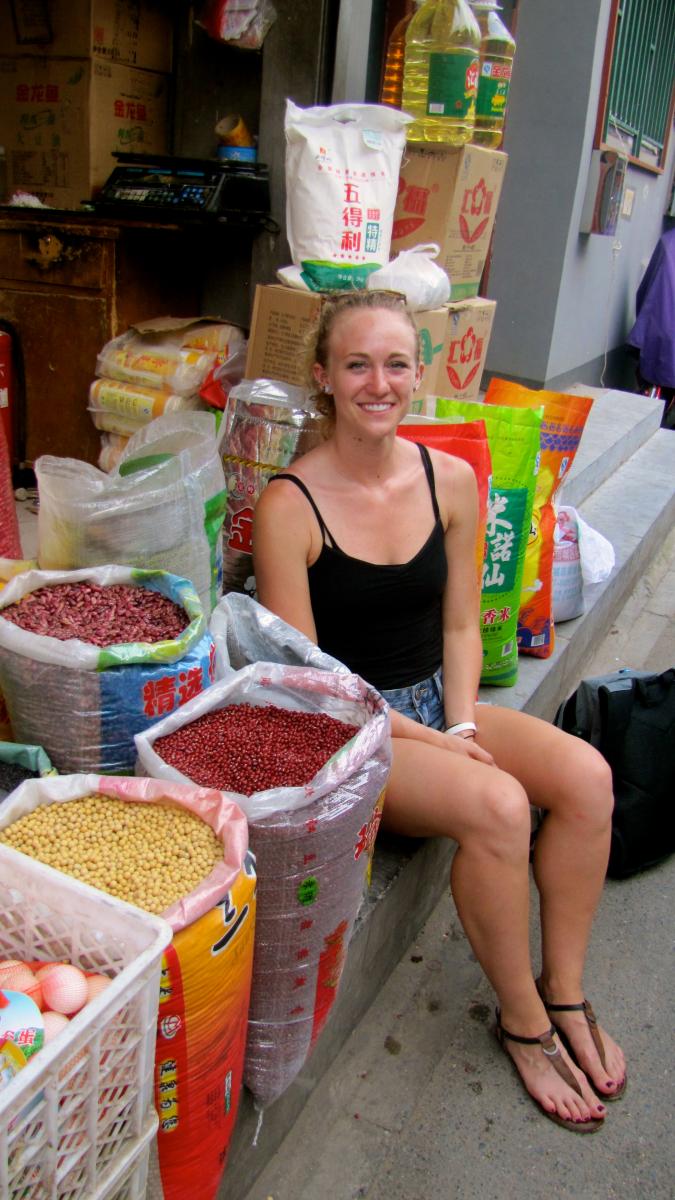Anna and the soybean talk
Add Summary

Aug. 3, 2015
Anna Herzberger is an MSU Center for Systems Integration and Sustainability doctoral student studying Chinese at Peking University the summer of 2015. She hails from the farmlands of Virginia, Ilinois.
Ironically, after almost two weeks in China I still haven’t had any tea. I have dined in homes and in restaurants, with young and older people but have not encountered this elusive cornerstone of Chinese culture. However, I have encountered many products made from soybeans (黃豆).
After being harvested from the field, 85 percent of soybeans globally are processed or “crushed” and separated into soybean meal and soybean oil. 98 percent of soybean meal is further processed into animal feed, contributing to the world’s rising demand for meat consumption. Soybean meal provides essential protein for pork, chicken and beef production. Of the soybean oil, 95 percent is used in cooking, while the remaining 5 percent is used in industrial production (cosmetics, soaps, biodiesel, etc.).
protein for pork, chicken and beef production. Of the soybean oil, 95 percent is used in cooking, while the remaining 5 percent is used in industrial production (cosmetics, soaps, biodiesel, etc.).
Soy contains all eight essential amino acids, which may explain why it is so prevalent in Asian cooking, a tradition dating back more than 3,000 years. On my very first night, I had a delicious meal of tofu with beef and sweet peppers. As I explore the shelves of the Chinese grocery store I find soymilks and yogurts, soy meat alternatives, sweet buns filled with soy paste as well as an added ingredient in almost all processed foods. The produce section contains raw soybeans both shelled and unshelled.
As I slurp down dish after dish of deliciousness I assume almost everything is cooked in soybean oil. But upon further inspection, I am told that while soybean oil is very popular due to the fear of GMO technology, many urban Chinese prefer alternative oils. GM-soy cultivation is not permitted in China and there is a strong stigma against it. So strong in fact that within minutes of telling Chinese students that I study soybeans they immediately question whether they are “natural” or not. While China is the world largest producer of non-GM soybeans, they import 60 percent of their domestic consumption mainly from the U.S. and Brazil where almost all soybeans are genetically modified.
We have reached a nexus where tradition and technology collide.



 Print
Print Email
Email





